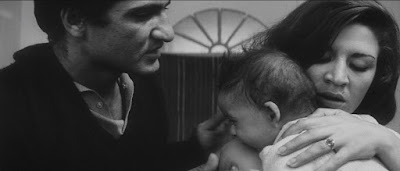گزارش پنجاه و نهمين جشنواره فيلم لندن، 2015
در انتظار نماي مطلق
احسان خوشبخت
1 اين يك پيپ نيست
فيلم خوبي نيست. به نوعي آماتوري است. حتي شايد بيش از حد آماتوري است. اما
چون عنوانش هست نافيلم، شايد بشود آن را بخشيد و به آن بخشي از فيلم پرداخت
كه ميتواند درآمدي بر گزارشي 59 فيلمه از دورۀ پنجاه و نهم جشنواره فيلم لندن باشد.
اين مستند دو ساعت و ده دقيقهاي، با عنوان كامل و متظاهرانۀ نافيلم: يككينومقاله از راس ليپمن، صدالبته به كارگرداني راس ليپمن، دربارۀ فيلمي 24
دقيقهاي است كه به شكلي سرراست فيلم نام دارد. فيلم را بر اساس
ايده و فيلمنامهاي از ساموئل بكت و با نظارت ميليمتري او آلن اشنايدر كارگرداني
كرد و وقتي چاپلين از بازي در اين نقش سرباز زد، باستر كيتن تقريباً فراموش شده
بود كه در نقش O (به معناي هيچ يا صفر يا چشم و يا هر
سه) ظاهر شد.
نافيلم تقريباً نما به نما فيلم را
تحليل ميكند و با تمام ضعفهايش در بخش سينمايي، از خلال نگاه بكت به سينما
تماشاگر را پديدۀ دشواري ثبت يك نماي صاحب معنا و هويت روبرو ميكند. بيشتر نماها
هيچ معنايي ندارند، اما چطور ميشود آن نمايي را پيدا كرد كه براي خودش معنايي
دارد، درست مثل يك كلمه. نافيلم نشان ميدهد كه چطور فيلم ايدۀ مطلق
بودن يا نامطلق بودن تصاوير را طرح ميكند. وقتي فيلمبردار فيلم، بوريس كافمن -
برادر كوچك ژيگا ورتوف - از بكت ميپرسد چه طور خياباني در فيلمش ميخواهد او جواب
ميدهد: «خياباني مطلق». اين توضيح نه تنها كمكي به كافمن نميكند بلكه او را گيجتر
هم ميكند. اما وقتي آنها به لوكيشن اصلي در نيويورك ميروند بكت «خيابان مطلق» را
پيدا ميكند: خياباني كه آن قدر به طور بديهي و مطلق خيابان است كه هيچ معناي
ديگري نميتواند داشته باشد. يك نما از خيابان مطلق، خيابان بودن خودش را مثل قطعيت
بديهي سياه در كنار سفيد تثبيت ميكند.





























